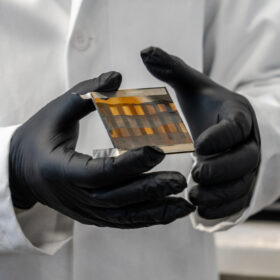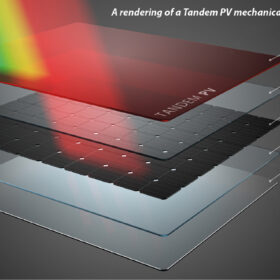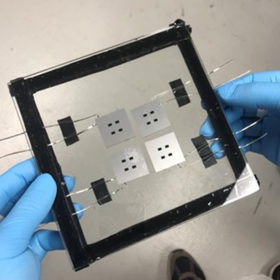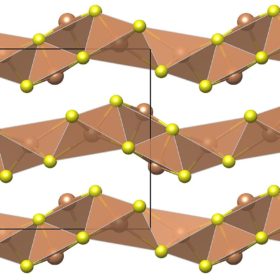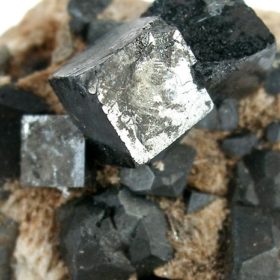Accelerated testing procedures for perovskite solar cells
Scientists in the US developed a series of accelerated testing procedures designed to predict how perovskite solar cells will perform when installed outdoors for a long period of time. The study finds that combined, simultaneous exposure to light and heat gives the most accurate of how a perovskite solar cell will perform in the field.
Weekend Read: Pushing perovskite PV limits
The perovskite solar race is heating up, with a cue of manufacturers forming to test products at the US Department of Energy’s (DoE) PV commercialization facilities, and academics on both sides of The Pond announcing new advances in recent months.
Inverted perovskite solar cell achieves 23.9% efficiency, high durability
A US-Canadian group of scientists has used Lewis base molecules to improve surface passivation in a perovskite solar cell. The team produced a device with a high open-circuit voltage and remarkable stability levels.
Antimony selenide solar cell with 6.4% efficiency
Scientists in the United States have fabricated a solar cell using antimony selenide films with favorable crystalline properties. They achieved the remarkable conversion efficiency for this early-stage PV material by focusing on the selenization temperature.
Space-based PV sheets with power output of 1,000 W/kg
U.S. researchers are developing thin-film PV technologies to create lightweight solar sheets to support communication satellites and wirelessly transmit power to Earth-based receivers. A space-based solar array could include tens of millions of sheets, with a capacity of up to 800 MW.
Bifacial perovskite solar cells may become more eco friendly than crystalline ones
A US study has suggested the raised energy yield of bifacial perovskite devices effectively means they could have a lower environmental impact than conventional crystalline cells. The researchers considered single-junction cells with high and low bandgaps and similar, multi-junction devices with two and four-terminal structures.
